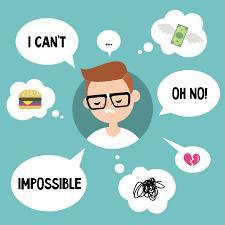“I felt that blanket!” Andrew exclaimed as he talked about his hypnotherapy experience. Struggling most of his life with mild autism and anxiety, Andrew often felt hopeless and confused. He had tried various doctors and medications, but they only seemed to worsen his anxiety, leaving him desperate for a way to escape their grip.
Feeling overwhelmed, Andrew came to therapy seeking control over his anxiety. It was affecting his job prospects, straining his relationships, and making it hard for him to leave the house. In traditional talk therapy, he found it difficult to express his feelings and often experienced sensations without the words to describe them.
This difficulty added to his frustration. In our hypnotherapy session, I guided him through breathing and imagery exercises, helping him enter a state of relaxation that he had longed to experience but couldn’t due to his anxiety.
The goal was for Andrew to feel at ease with his anxiety and find a peaceful place, reducing his constant nervousness. This is where the blanket came in. He visualized a warm blanket surrounding him, providing comfort and protection. He imagined it as a comforting tool, accessible whenever he needed it. When anxious feelings arose, he learned to close his eyes, take a few deep breaths, and envision the blanket surrounding him. Each breath allowed him to access a calm state free from anxiety.
After his first session, Andrew tried the blanket technique at home. We called this self-hypnosis. He practiced using the warm blanket in his mind when he woke up, when anxiety struck during the day, and each night before bed for a week.
The Final Result
Upon returning for his next session, he shared that his anxiety had nearly vanished. He was overjoyed to have found a tool that resonated with him. Since he experienced life through sensations and images, hypnotherapy proved effective.
This experience empowered him to manage his inner feelings. Andrew felt transformed, gaining a sense of freedom and control over his anxiety. After weeks of practice, he realized he didn’t need to use self-hypnosis multiple times daily; he was simply feeling better.
Recommendations
While hypnotherapy isn’t for everyone, it can equip you with tools for relaxation and comfort in everyday life. It’s crucial to consult a certified hypnotherapist, preferably one trained by the International Certification Board of Clinical Hypnotherapy (ICBCH) or the Ericksonian Institute. Their training typically spans an extended period, unlike quicker weekend courses. There are other reliable hypnotherapy certification bodies, but I particularly recommend these two.
Is Hypnosis Safe?
Hypnotherapy is safe and effective. If you’re seeking swift changes in your life, it might be the key to unlocking your potential as well. Remember, results can vary with hypnotherapy. While there’s no guarantee it will work for you, I encourage you to keep an open mind and believe that it can work—and that you deserve it.
The client’s name in this true story has been changed to protect their identity.



